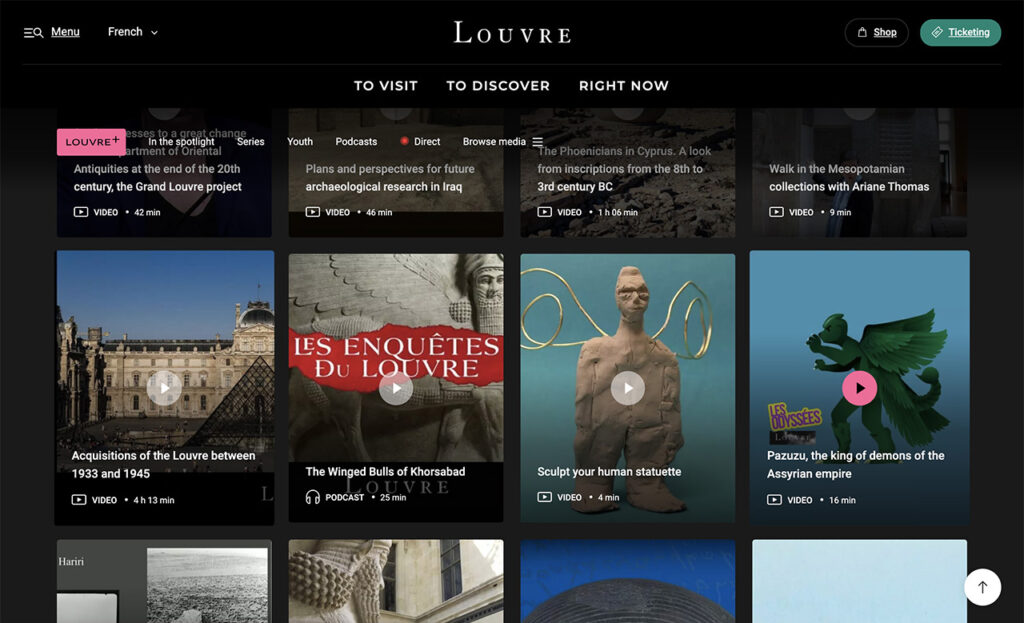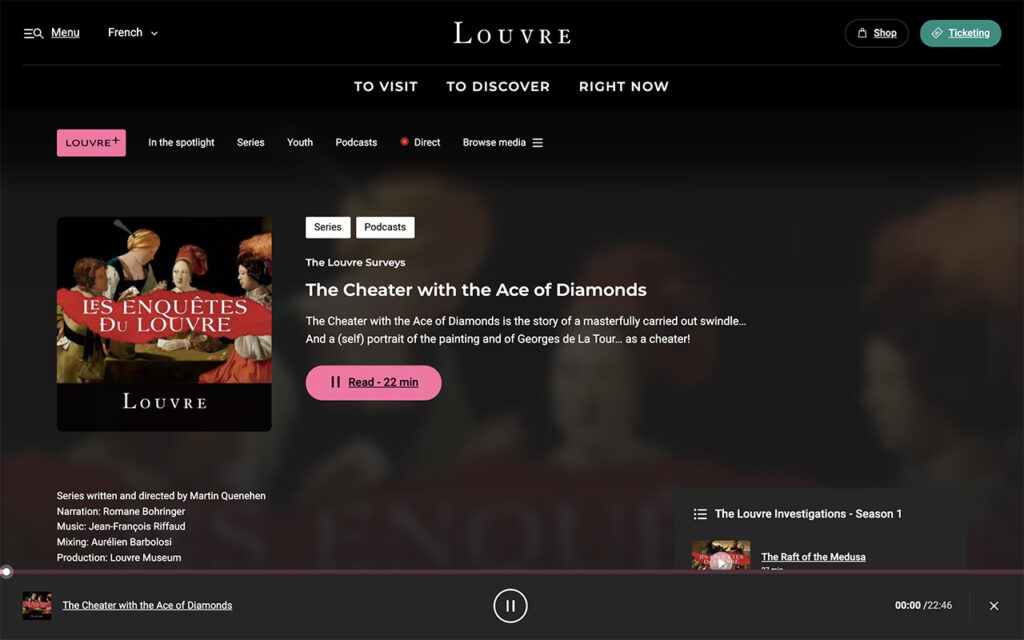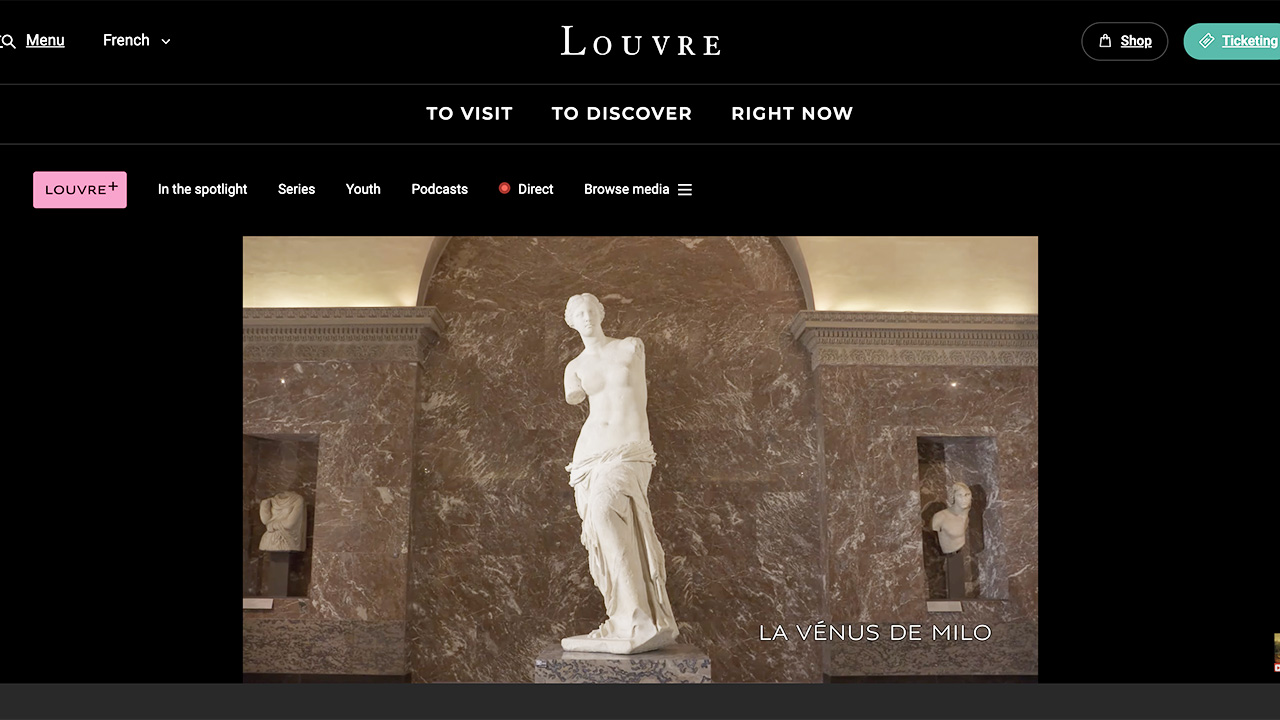Even under a cloud of lockdowns and travel restrictions, the Louvre Museum, perhaps unsurprisingly, held firm at the top of the world’s most visited museums in 2020. Yet, the pandemic has had its effect on the historic landmark: the 2.7 million visitors it saw through its doors last year represented a 72 percent drop from 2019 numbers.
To make up for that precipitous fall in physical visitation, the museum turned to online activations from virtual tours to livestreams over 2020 to ensure its collections remained accessible across the digital divide. Now, though, the Louvre is greatly enlarging its virtual presence with the launch of its dedicated digital platform, Louvre+.
What happened

Louvre+ presents all of the Louvre’s digital content — from video tours to podcasts to live broadcasts — on a single, dedicated platform. Image: Louvre+
Created with the support of Art Explora, Louvre+ houses a spread of digital content created by the Parisian institution. At the portal, visitors can watch videos, in the form of mini-documentaries or web series, that expand on the Louvre’s history or listen to the Louvre Surveys series of podcasts that explores stories behind its collections. They can embark on virtual tours or delve into themed collections — Greek antiquities, say, or Islamic arts — which contain videos illuminating the history, preservation, and exhibition of these artifacts.
For viewers wanting a deeper dive, there are archived hour-long videos of past art-themed lectures held in the Louvre’s auditorium. The platform also plans to stream live broadcasts of events in the same auditorium on its Direct tab.
Why it matters

Besides making the museum newly accessible to digital visitors, Louvre+ also presents opportunities for monetization. Image: Louvre+
Chiefly, Louvre+ represents the culmination of a digital transformation that the institution commenced over 2020’s lockdowns. While its virtual programs have previously been hosted on YouTube or executed via partnerships, the museum is evidently intent on bringing the creation and hosting of its digital content in-house and onto a single platform, signaling a realignment of priorities as much as resources.
The portal also joins similar efforts by cultural organizations to platform their collections or exhibitions online as they grow to understand the evolving digital behaviors of their audiences. Further, these sites offers museums opportunities to monetize said virtual content, presenting a revenue stream to replace lost footfall.
And finally, while the Louvre itself symbolizes for many a high-walled palace of fine art, Louvre+ dramatically unlocks and democratizes access to one of the world’s richest collections. The platform’s many videos and podcasts, particularly its Petit Louvre series aimed at children, are further delivered in an unstuffy, approachable format that should ensure the broadest reach. As Linda Norris of the International Coalition of Sites of Conscience once said of the new cultural climate, “It’s not about inviting people to come to a meeting at your big, scary, official-looking museum, but going to meet people where they are.”



